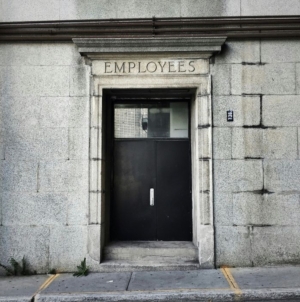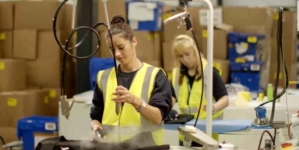-
BLACKOUT TECHNOLOGIES TARGETS TELEMATICS-INTEGRATED MOBILE DEVICE BLOCKING TO COMBAT SMARTPHONE DISTRACTION - 2 days ago
-
OpenADR Alliance announces first OpenADR 3.0 certified products with EVoke Systems, E.ON Energy and Universal Devices - March 25, 2025
-
Growing fulfilment and contract packer appoints new Managing Director - March 25, 2025
-
When is it time to invest in a WMS? Understanding the key trigger points - March 25, 2025
-
eCapital helps Vantage Recruitment on its journey to financial success - March 24, 2025
-
Hugo Beck Celebrates 70 Years of Packaging Innovation with Open House Events - March 20, 2025
-
PROLOG FULFILMENT SUPPORTS LUNA DAILY’S COMMITMENT TO BETTER BODY CARE FOR ALL WOMEN - March 19, 2025
-
Motion Ventures launches largest-ever maritime tech fund at $100M to meet the industry’s new pace of adoption - March 18, 2025
-
ITD GLOBAL APPOINTS GROUP CHIEF REVENUE OFFICER - March 17, 2025
-
SURECAM TEAMS UP WITH ENTERPRISE FLEX-E-RENT FOR VEHICLE REPAIR & MAINTENANCE CONFERENCE - March 14, 2025
How technology is driving the future of retail
Retail on the high street, if you believe media scaremongering, is dead. With an estimated one in ten high street shops now vacant, and big-name chain stores including Debenhams, House of Fraser and Marks and Spencer closing locations, what is next for UK retail?
Well, with eCommerce sales expected to reach €200 billion in 2019, – a rise of 14.6% on last year, it’s clear that there’s still plenty of money to be made. Many point their fingers at eCommerce and blame it for ruining the high street by undercutting prices. Of course, eCommerce retailers have significantly fewer overheads, which means they can lower prices for customers. Not only that, shopping online can be more convenient than the high street, especially when searching for a specific item.
The general consensus is that retailers with physical retail outlets must succeed online, otherwise the business is unlikely to survive. There are, of course, exceptions to the rule – Primark continues to shine brightly with no eCommerce offering. Their parent company’s finance director has suggested that there’s no urgent need to go online, and if they do, it will be to ‘complement’ their physical stores.
But even the world’s biggest retailer, Amazon has begun to move onto the high street. From Amazon Lockers to the Amazon Go store format, it’s clear that they see a future for the high street – it just needs infusing with technology. Omnichannel is the future of retail. It’s retail with a seamless experience, wherever and however the customer wants to interact with the business. That means retailers need a technology-first approach to engaging with their customers.
In the UK, Sainsbury’s have also moved towards the future, launching the first checkout-free, mobile-first store in April. It’s been incredibly popular – around 82% of transactions in the store are cashless. They’ll use the Holborn Circus location to help them develop this technology further, with a view to rolling out further.
Other big-name retailers are improving their customer experience so that it is seamless. Fashion retailer Oasis is actively blurring the lines between their mobile experience with their in-store experience. In their high street stores, sales advisors have iPads, meaning they can provide current product and exact numbers of stock. Should an item be out of stock, the advisor can order the item straight to the customer’s preferred address. Not only that, they can take payments on those iPads, anywhere in the store – helping eliminate queues at the checkout. This is all on top of a great website and mobile app. It’s clear Oasis have strategized carefully, and are providing the omnichannel service that their customers want.
So how can retailers take their lead from these retail giants? Unfortunately, it’s not a one-size-fits-all strategy. There’s too many variables between businesses – not all businesses benefit from high street locations.
Retailers with a physical location but not yet online can increase their profits by creating an eCommerce presence. As always, choosing the right systems can help streamline operations and maximises efficiency while minimising waste. Automated multichannel solutions are paramount, as is a great EPOS (Electronic Point Of Sale) solution. Being able to DropShip items can further increase the store’s offerings without using so much space. Replicating the Oasis model by providing advisors with iPads may not be realistic for smaller stores. However, it’s easy to access their supplier’s feeds at the checkout desk and place orders to be delivered the next day. This means they can provide a more extensive service and product range for customers, at more affordable prices, because overheads are lower.
eCommerce-only retailers can look to create partnerships with retail outlets. Whether this is to supply their products via the DropShipping model as discussed above, or partnering click-and-collect outlets, there’s huge potential to make it onto the high street without needing to take on retail space.
We’ve focused here on the future of retail and technology for customers and how it will impact the high street. But there are so many other considerations! As you might expect, Amazon is driving technology that will transform retail. The Transparency programme to avoid counterfeiting, delivery by drone, deliveries inside customer homes without them even being in, ordering via Alexa devices – these are all considerations that existing retailers cannot ignore. The point then, is that high street retail is not dead – it’s just like a human requiring a pacemaker, and needs the assistance of technology to keep it going.
About the Author
Tejas Dave, Founder and CEO of eBusiness Guru and Avasam, has been helping eCommerce businesses worldwide since 2010. Avasam is a platform that allows wholesalers and sellers to collaborate. Tejas is revolutionising the shipping industry and creating a new level of financial stability with the aim of creating 5,000+ jobs within the UK. Tejas is using technology and automation to provide solutions to e commerce challenges by removing the limitations that are currently placed on what and where people can sell. More information is available at www.avasam.com

































